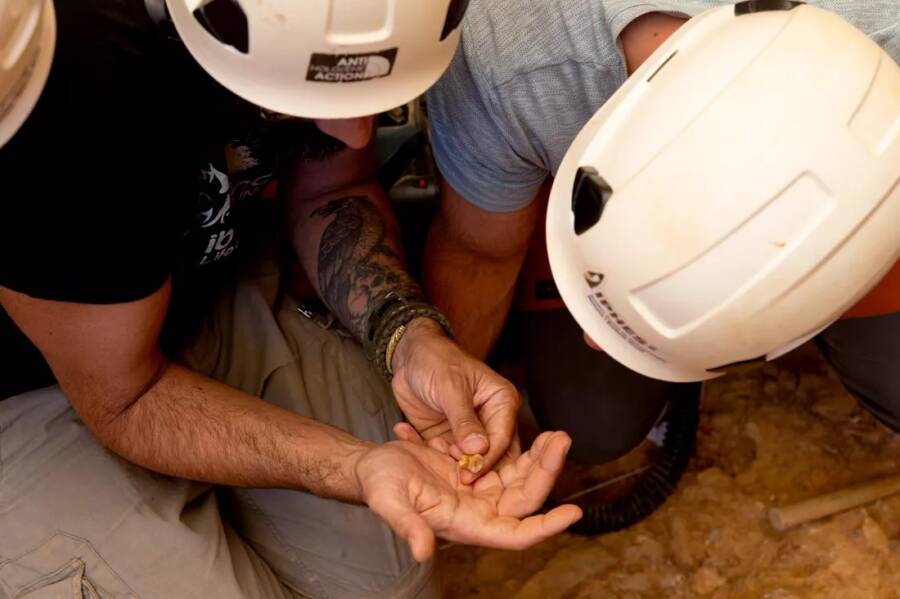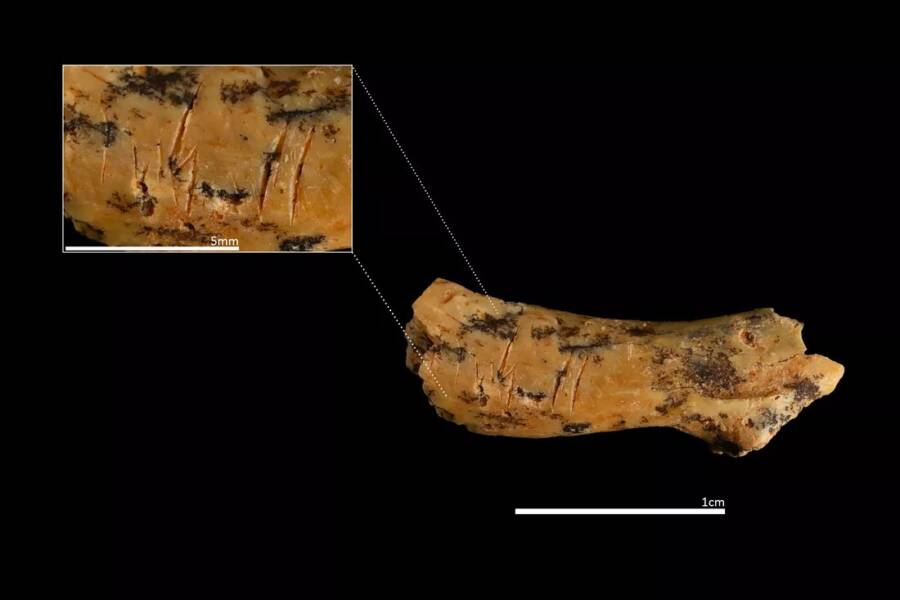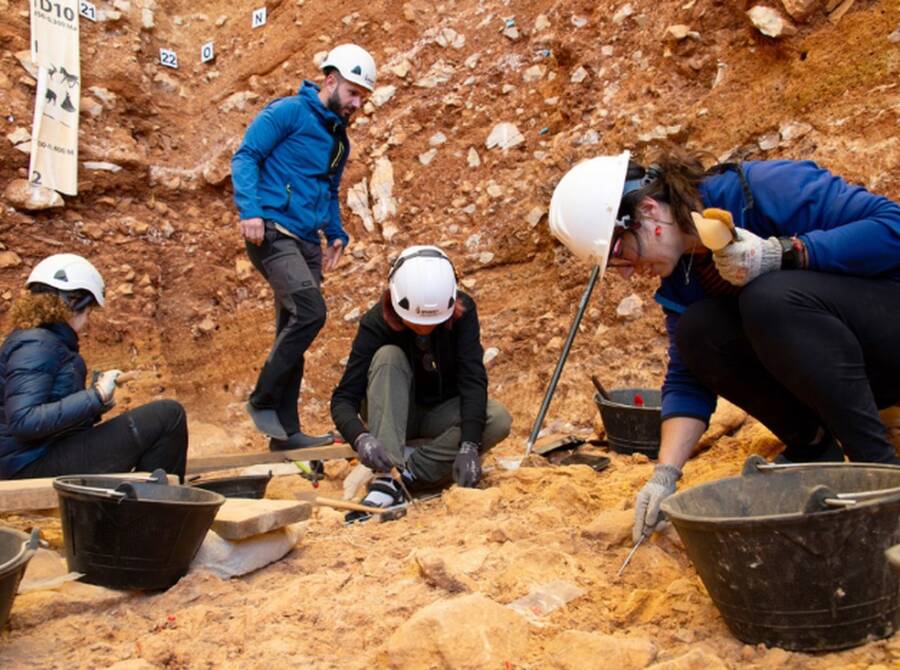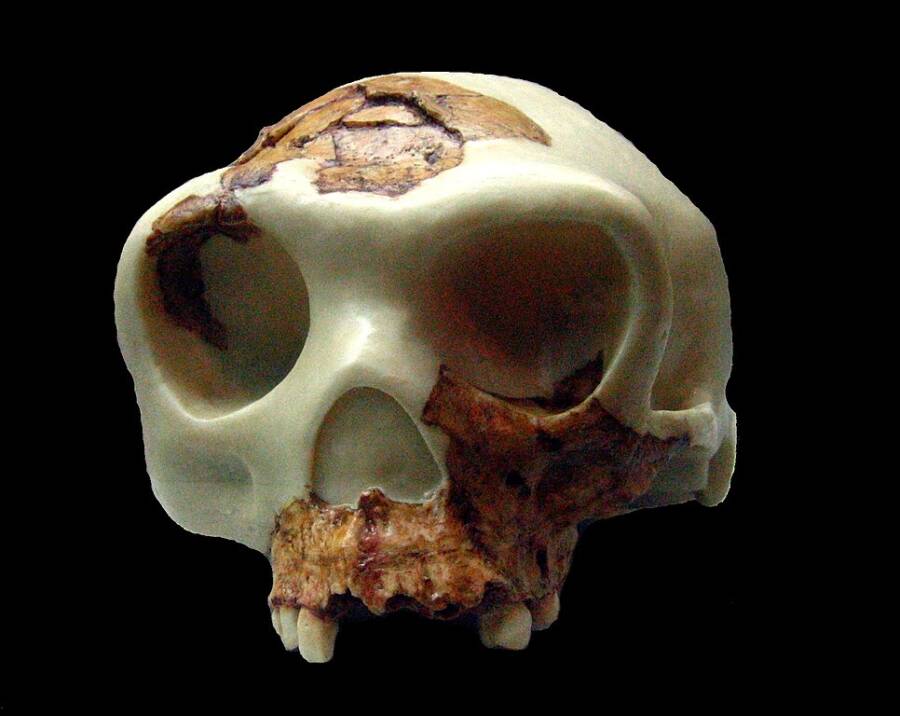Among several skeletons showing defleshing cuts and intentional fractures consistent with butchery, the grisliest recent discovery at Gran Dolina cave was the 850,000-year-old remains of a toddler as young as two that had been decapitated and eaten.

Maria D. Guillén/IPHESThe toddler bones came from one of 10 Homo antecessor skeletons recently excavated at Gran Dolina cave in northern Spain.
Archaeologists in Spain recently discovered the remains of a toddler that was eaten by its archaic human relatives roughly 850,000 years ago.
These bones were found at the archaeological site inside Gran Dolina cave in Atapuerca, Spain. The child was likely between the ages of just two and five at the time of their death.
The toddler was decapitated and then cannibalized, based on markings found on their neck bones. This new discovery contributes to the body of evidence that there was a systemic pattern of cannibalistic behavior among this early species of human, known as Homo antecessor.
Widespread Evidence Of Cannibalism Among Archaic Humans Found At Spain’s Gran Dolina Cave

Maria D. Guillén/IPHESMarkings on the toddler bone indicate that the child was decapitated before being eaten.
In July, archaeologists with Spain’s Institut Català de Paleoecologia Humana i Evolució Social (IPHES) found 10 sets of remains at the Gran Dolina cave archaeological site. All the remains came from the species Homo antecessor, an early human relative that went extinct approximately 770,000 years ago and is believed to be the last common ancestor of both Neanderthals and modern humans.
Perhaps the most striking find was the vertebra of a young child, which dated back approximately 850,000 years. Archaeologists believe the child was somewhere between the ages of two and five when they died. Moreover, the bones show distinct marks indicating that the toddler was decapitated.
“This case is particularly striking, not only because of the child’s age, but also due to the precision of the cut marks,” said Palmira Saladié, IPHES researcher and co-director of the Gran Dolina excavation.
Many of the other nine sets of Homo antecessor remains recently found at the site also showed signs of cannibalism, including defleshing cuts and intentional fractures. These cuts were consistent with those found on the bones of butchered animals also uncovered at the site.
These remains provide further direct evidence of cannibalism by this particular species of early human, a practice that researchers believe was likely systematic.
“The vertebra presents clear incisions at key anatomical points for disarticulating the head,” said Saladié. “It is direct evidence that the child was processed like any other prey.”
Why Was Cannibalism A Way Of Life Among The Homo antecessor Community At Atapuerca?

Maria D. Guillén/IPHESThere is still much left to discover at Gran Dolina, a site that has been yielding pivotal discoveries since the 1990s.
This is far from the first time that archaeologists have found evidence of prehistoric human cannibalism, both worldwide and especially at this particular archaeological site. In the nearly 30 years of excavations at Gran Dolina cave, researchers have unearthed more than two dozen examples of cannibalism among the early humans that inhabited it, including a cannibalized 11-year-old girl whose remains were uncovered in 2021.
“The cut marks on the bones do not appear in isolation,” Saladié told Live Science. “Human bite marks have been identified on the bones — this is the most reliable evidence that the bodies found at the site were indeed consumed.”
The new evidence of cannibalism at the site strengthens the researchers’ theory that these early humans used their fellow Homo antecessor as a food source. It’s also possible that cannibalism was practiced as a form of territorial control, experts say.

Wikimedia CommonsThe reconstructed skull of a Homo antecessor child.
All of the bones recently found at the site dated from between 850,000 to 780,000 years old, making them some of the earliest confirmed cases of human cannibalism ever uncovered. What’s more, this age estimate also makes these bones the earliest known evidence of early human relatives living in what’s now Europe.
Excavations at the Gran Dolina cave now continue, as archaeologists with IPHES believe there are likely more undiscovered remains that could shed light on how these early humans lived.
As Saladié said, “Every year we uncover new evidence that forces us to rethink how they lived, how they died, and how the dead were treated nearly a million years ago.”
After reading about the evidence of cannibalism among early humans, discover the 1.5 million-year-old bone that could instead be the earliest evidence of early human cannibalism. Then, learn about Kuru, the fatal brain disease caused by cannibalism.





